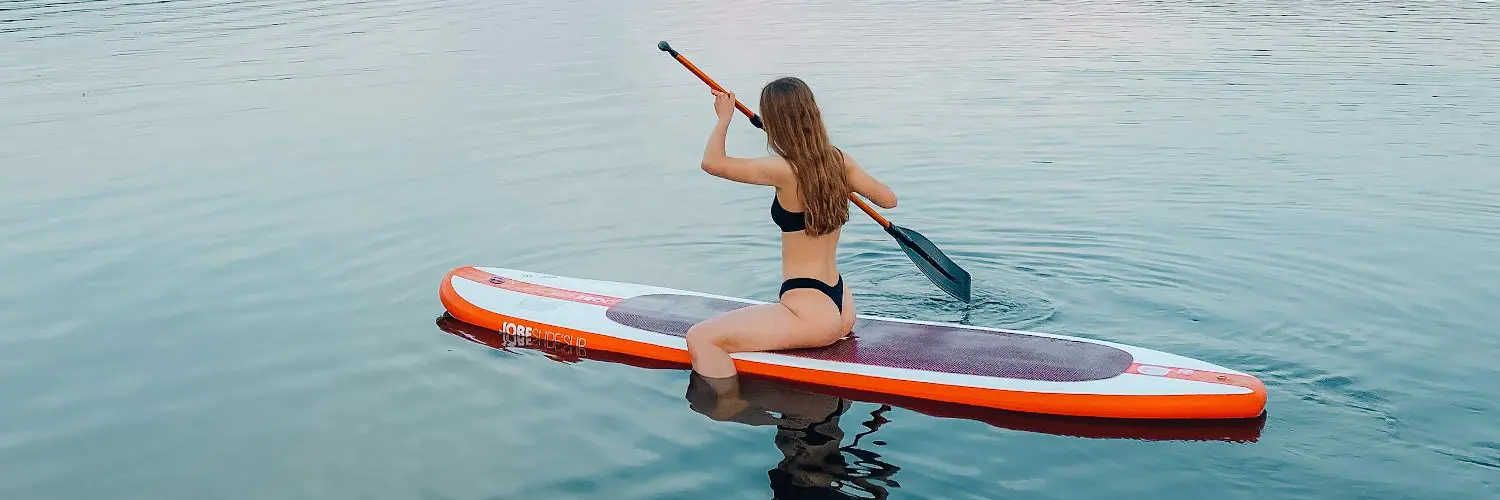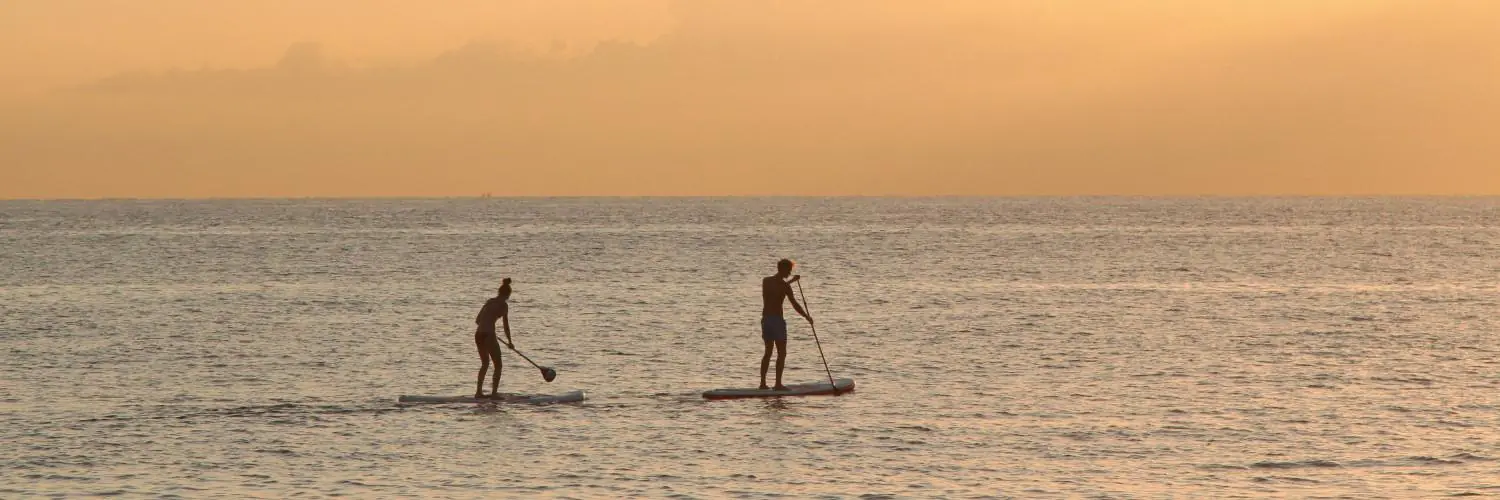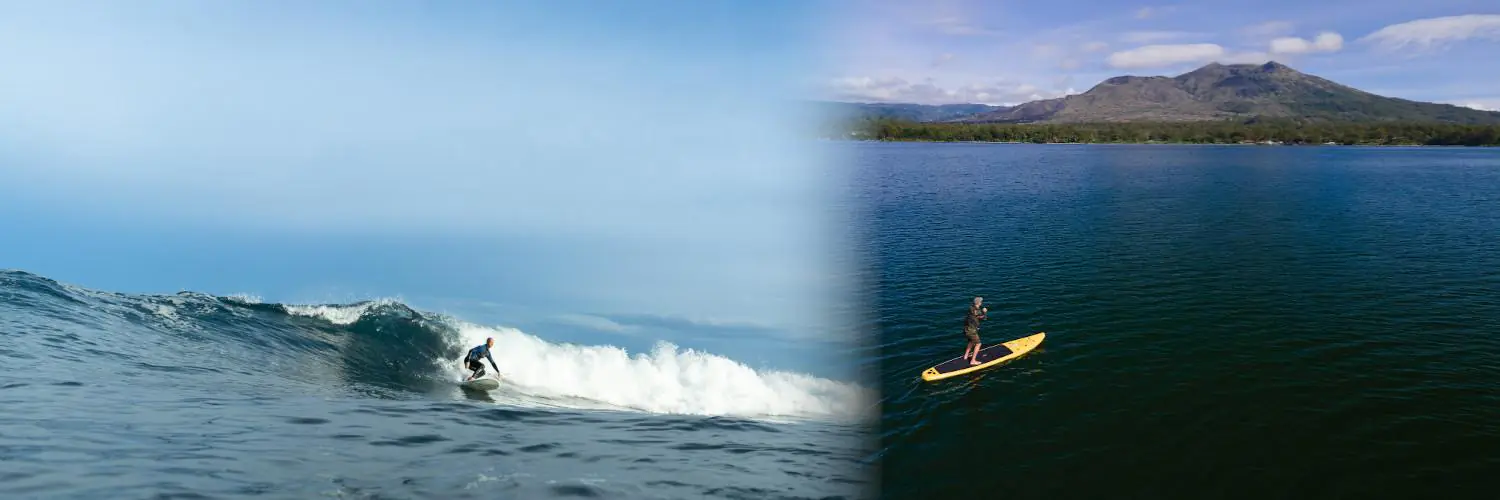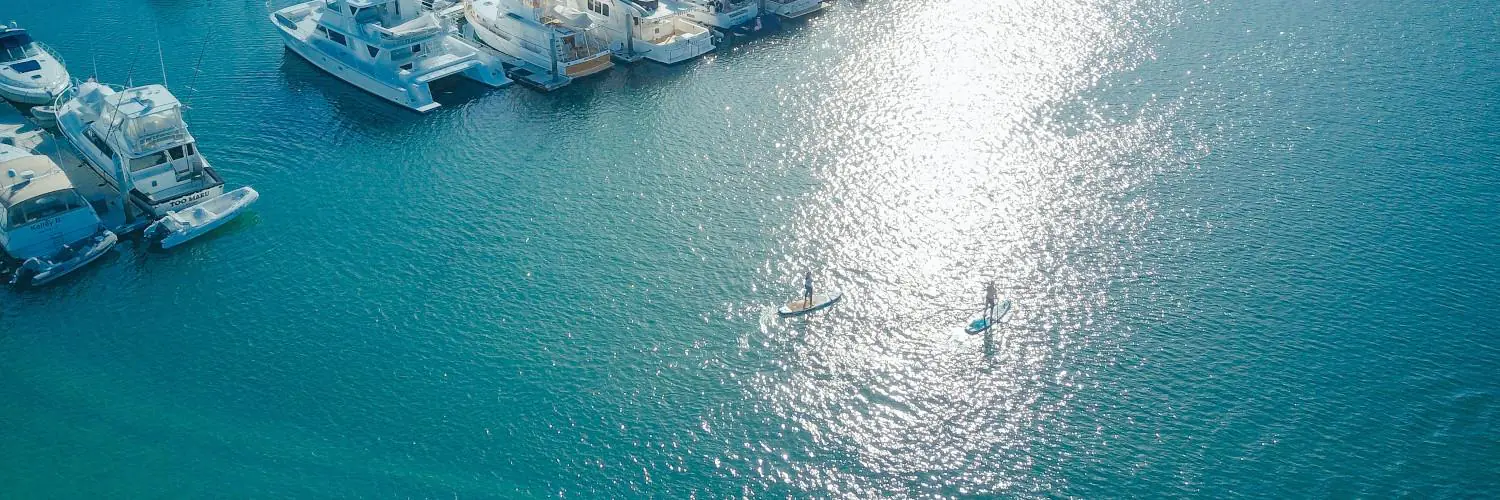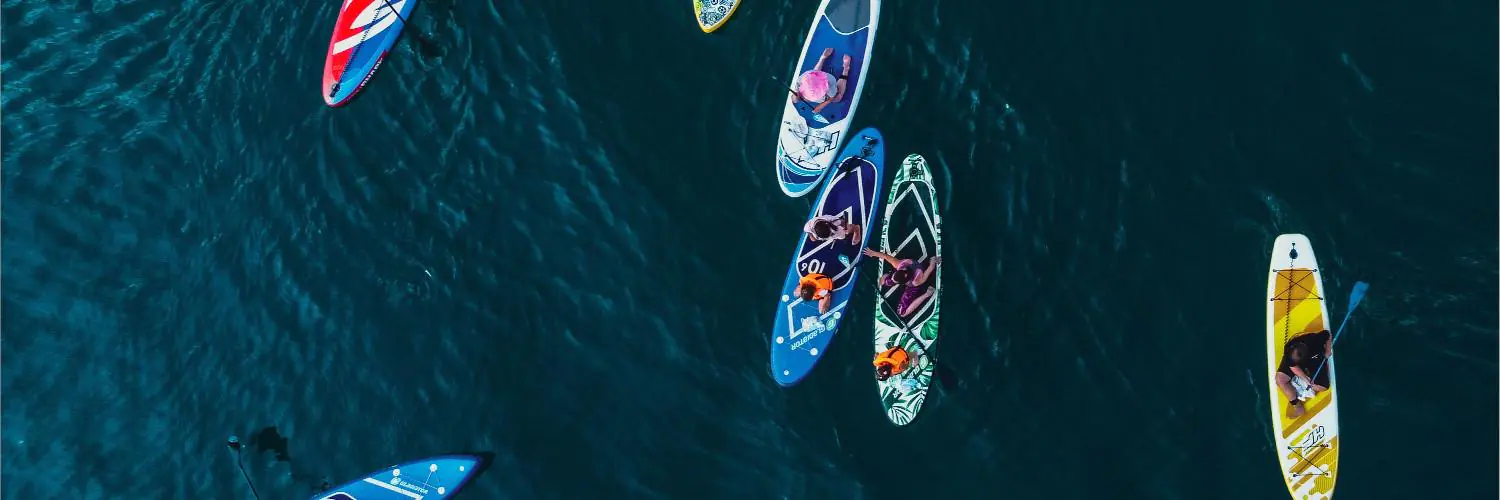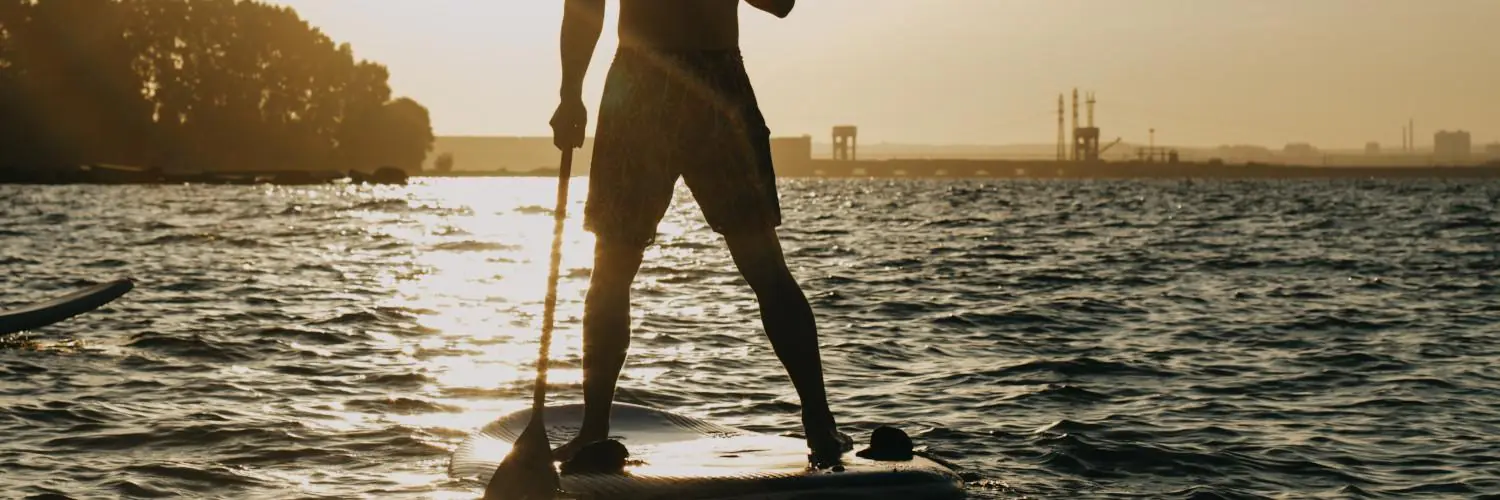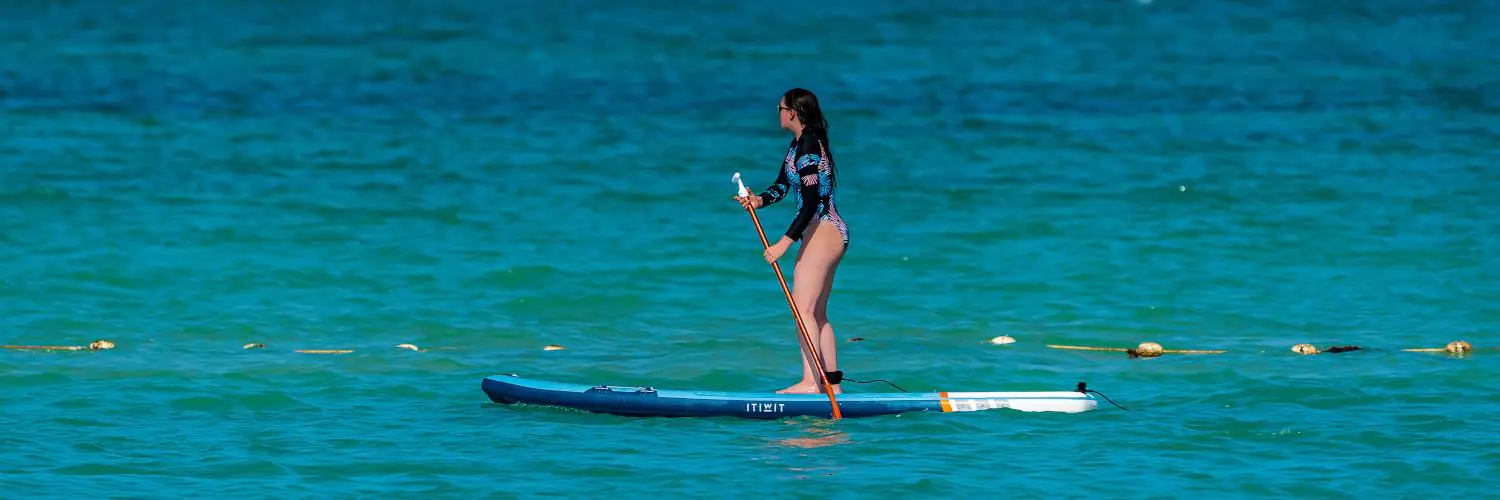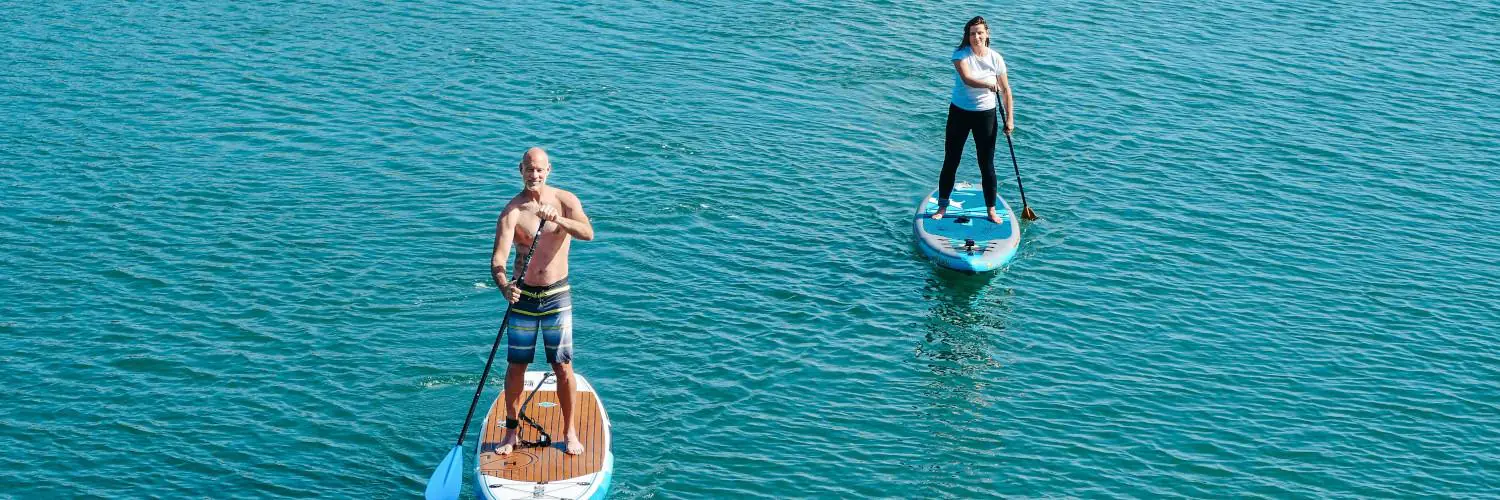In the world of stand-up paddleboarding (SUP), the shape of the board’s hull plays a crucial role in its performance on the water. Displacement hulls, with their pointed noses, are specifically designed to slice through the water efficiently. This design allows paddlers to move faster and with less effort, a feature that is particularly beneficial for long-distance touring, fitness paddling, or racing. Unlike planing hulls that are wider and flatter and tend to ride on top of the water surface, displacement hulls are engineered to displace water, cutting a clear path and providing a smoother, more direct paddling experience.
Choosing a SUP with a displacement hull often means opting for a board that is streamlined and typically longer than its planing counterparts. These boards are geared towards paddlers who prioritize speed and distance over maneuverability. The narrow shape and pointed bow allow the SUP to maintain a steady straight line, making it an optimal choice for those looking to cover larger expanses of water, whether it be on tranquil lakes or open oceanic conditions. The design considerations of displacement hull SUPs cater to a more dedicated segment of paddleboard enthusiasts who demand efficiency and performance from their equipment.
While displacement hull SUPs can be a top pick for reaching higher speeds and embarking on lengthy paddles, they may require a higher skill level due to their reduced stability compared to planing hull designs. As such, these hulls are best suited for more experienced paddlers or those who have specific goals that align with the advantages offered by a displacement hull design. Despite the trade-offs in stability, for individuals interested in racing, fitness paddling, or touring, the displacement hull SUP provides a specialized solution that enhances the paddling experience in terms of speed and mileage efficiency.
Table of Contents
Understanding Displacement Hulls
When choosing a stand-up paddleboard (SUP), understanding the difference in hull designs is crucial for selecting the right board for one’s needs. Displacement hulls stand out for their efficiency in cutting through water, offering a distinct performance profile suitable for different water conditions.
Principal Characteristics of Displacement Hulls
Displacement hulls are easily recognized by their pointed nose or bow, which resembles that of a kayak or canoe. This design allows the hull to efficiently cut through water, displacing it around the board as it moves forward. They possess a narrower width compared to planing hulls, contributing to their higher speed potential. Displacement hulls offer considerable volume, enabling them to support more weight, which is a beneficial attribute for activities like touring where gear may be carried.
The hull’s efficiency generates less drag, allowing for smoother and more energy-efficient paddling sessions. However, this also means that they require a keener sense of balance, as their stability may be compromised, especially when stationary. This trade-off is noticeable in flatwater conditions, where they excel in performance, gliding effortlessly through the water.
Comparing Displacement and Planing Hulls
- Stability: Displacement hulls have less initial stability when stationary but offer more secondary stability during motion, whereas planing hulls provide more overall stability, especially at rest.
- Speed: Displacement hulls are typically faster due to their streamlined shape that creates less water resistance. Planing hulls may sacrifice some speed for increased maneuverability.
- Performance: With their ability to slice through water, displacement hulls are adept at maintaining a straight track and efficient paddle strokes; planing hulls are more suited to casual paddling and activities that require quick turns.
- Drag: The narrow and pointed profile of displacement hulls reduces drag significantly, making them ideal choices for long-distance paddling and racing.
- Volume: Displacement hulls can handle larger volumes, beneficial for carrying additional equipment or for larger paddlers.
In summation, a paddler choosing between a displacement hull and a planing hull should consider the stability, speed, and performance requirements of their intended use, as well as how the hull’s design will interact with the volume of water displaced.
Design and Performance
The design of a SUP’s hull plays a pivotal role in its performance on the water, affecting characteristics such as tracking, maneuverability, and buoyancy.
Impact of Hull Design on Performance
The hull design of a stand-up paddleboard (SUP) directly influences its performance. A well-designed hull can enhance the SUP’s efficiency, enabling it to glide through the water with less resistance. Displacement hulls, characterized by their pointed nose or bow, cut through the water, which can improve tracking—the board’s ability to maintain a straight path. They typically have a V-shaped underwater profile that helps to displace water to the sides, increasing efficiency and speed. However, these designs may trade off some maneuverability for enhanced tracking and speed.
Hull Types and Their Functionalities
There are two primary hull types to consider:
-
Displacement Hulls:
- Design: Pointed nose with a V-shaped profile.
- Functionality: Superior tracking and efficiency, making them ideal for long-distance paddles, touring, and fitness.
- Performance: Offers increased speed but typically requires more effort to turn.
-
Planing Hulls:
- Design: Flat and wide, similar to a surfboard.
- Functionality: Provides more stability and ease-of-use, suited to leisure paddling, surfing, and whitewater.
- Performance: These hulls are designed to ride on top of the water, providing better maneuverability but less efficiency in straight-line paddling compared to displacement hulls.
Board shape, combined with the chosen hull type, further impacts the board’s buoyancy and maneuverability. Boards with wider widths can offer more stability but may decrease performance in speed and tracking. Conversely, narrower boards can be faster but less stable, especially for novice paddlers.
SUP Activities and Hull Choices
When selecting a stand-up paddleboard (SUP), the hull type directly influences the board’s performance and suitability for specific activities. The two primary hull choices for SUPs are planing and displacement, with each offering distinct advantages depending on the desired paddling activity.
Touring and Racing with Displacement Hulls
Displacement hulls are the preferred choice for touring and racing on a SUP due to their streamlined shape, which cuts through water efficiently. This design offers enhanced stability and allows for faster, straight-line paddling over longer distances. For individuals looking to engage in touring or competitive racing, boards with displacement hulls are typically longer and narrower, aiding in balance and reducing drag.
Key features of displacement hulls for touring and racing include:
- Sleek, V-shaped front (bow) to glide through water and maintain speed
- Increased length for better tracking and stability
- Narrower width to improve speed and balance
Yoga and Fitness on a SUP
For activities like SUP yoga and on-the-water fitness routines, a board with a planing hull is often recommended due to its wide and flat design. This shape provides a stable and comfortable platform, which is essential for yoga poses and fitness exercises that require freedom of movement and balance.
Aspects of planing hulls that benefit SUP yoga and fitness activities include:
- Wider surface for a stable base and improved comfort
- Flat hull for consistent stability when stationary or moving slowly
- Larger deck area to accommodate yoga poses and fitness movements
Selecting the Right SUP Board
When choosing a stand-up paddleboard (SUP), it’s important to consider the specific details such as size, weight capacity, and construction materials, which directly affect performance and pricing.
Determining the Appropriate Size and Weight Capacity
Size:
- Short (<10’): Agile, suitable for surfing
- Medium (10’ to 12’): Versatile, good for all-around use
- Long (>12’6”): Ideal for racing and long-distance touring, with better glide and speed
Weight Capacity:
- Lightweight Paddler (<150 lbs): Can opt for smaller boards
- Average Paddler (150-200 lbs): Medium boards are preferable
- Heavyweight Paddler (>200 lbs): Larger boards with higher weight capacity ensure stability and performance
A paddleboard’s weight capacity is crucial; exceeding it can lead to poor performance and may risk the paddler’s safety.
Materials and Build: Inflatable vs. Solid Boards
Inflatable SUPs:
- Pros: Easy storage and transport, increased durability, often more affordable
- Cons: Typically slower, less rigid than solid boards
- Ideal for recreational use and paddlers prioritizing convenience
Solid Boards (Epoxy, Fiberglass, etc.):
- Pros: Superior performance, better glide, and more responsive handling
- Cons: More expensive, requires more storage space, less durable when impacted
- Suited for serious paddlers looking for enhanced performance and speed
Material selection often comes down to the intended use, storage considerations, and budget. Solid boards offer better performance but require greater upfront investment and care.
Advanced Considerations for SUP Enthusiasts
Stand Up Paddleboarding (SUP) at an advanced level requires finesse in technique and adaptability to varying water environments. The right combination of skills and board technology can lead to a more efficient and smooth ride in diverse conditions—from calm lakes to the open ocean.
Enhancing Techniques for Competitive Paddlers
For competitive paddlers, mastering advanced SUP techniques is crucial for efficiency and speed. They should focus on:
-
Stroke Power: Proper mechanics of the paddle stroke can reduce drag and increase propulsion. Advanced paddlers should ensure their strokes are both deep and full, utilizing core muscles for power rather than just arms.
-
Turning Agility: Implementing pivot turns and using the board’s rails effectively allows for quick directional changes without losing momentum. Competitive paddlers benefit from practicing these turns to navigate buoy turns or alterations in race courses decisively.
Adaptations for Paddling in Different Water Environments
Navigating various water environments demands specific adaptations:
-
Rough Waters & Choppy Conditions: When encountering choppy water or navigating through ocean swells, advanced paddlers adjust their stance, often widening it for increased stability. They also adapt their paddling technique to be shorter and more vertical to cope with the uneven water.
-
River Paddling: Paddling in rivers, especially in whitewater conditions, requires an acute awareness of the board’s volume and weight distribution. Paddlers often choose a displacement hull SUP for its ability to cut through flowing water, favoring its pointed nose which aids in directional stability.
Advanced SUP enthusiasts focus on the technical aspects of paddling to navigate and compete in varying water environments effectively. Their strategies are informed by the principles of fluid dynamics, paddling mechanics, and a thorough understanding of the SUP board’s response to different conditions.

